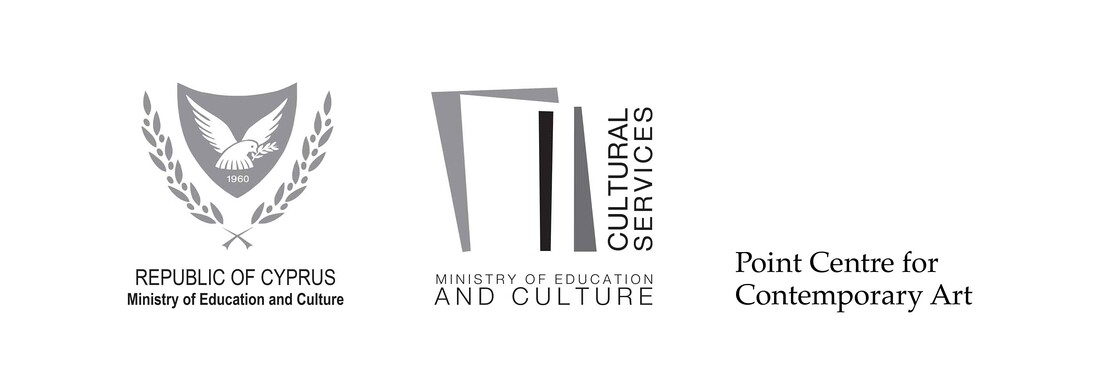May 11–November 24, 2019
Associazione Culturale Spiazzi
Calle del Pestrin, 3865
30122 Venice
Italy
info@cyprusinvenice.org
Curated by Jacopo Crivelli Visconti
The Cyprus Pavilion at the 58th edition of the Venice Biennale, carrying the general title May You Live in Interesting Times, will be presenting a posthumous exhibition of works by Christoforos Savva (1924–1968).
Christoforos Savva (1924–1968) is widely acknowledged as one of the most groundbreaking Cypriot artists of the 20th Century. Having spent a great deal of the ’50s in Paris and London, Savva settled back in Nicosia in 1960 and in a relatively short period of time produced an impressive and highly diverse body of works, ranging from paintings to sculptures, experimentations with wire, cement, and leftovers from fabrics—apart from forays in the field of furniture design and architectural interventions. The coexistence of styles and the wide range of themes and references that appear in Savva’s work seem to suggest that strictly formal questions were not his main concern. It could be said that the core of his practice constantly shifted toward a place that was beyond both the form and the content of any individual work. Taking his activity as a whole, there is a sense that this “beyondness” encapsulates his role in Cypriot society and in the local artistic system that was being organised at the time. In May of 1960 (the year Cyprus gained independence from Britain) Savva founded, together with Welsh artist Glyn Hughes, Apophasis [Decision], the first independent cultural centre of the newly established Republic of Cyprus. The impressive array of activities hosted at Apophasis included art exhibitions, performances, drawings by children, a joint exhibition of Greek Cypriot and Turkish Cypriot artists (a quite audacious endeavor for that time), plays, talks, poetry readings, and film screenings. The almost idiosyncratic diversity of Apophasis is comparable to Savva’s own effervescent artistic production: in a polarised and divided society, that had barely emerged from a long anti-colonial struggle before it plunged into violent intercommunal conflict, the habit of including opposites became no less than a political statement.
In 1968, few weeks before his untimely death, Savva was among the artists representing Cyprus in its inaugural Pavilion at the 34th Venice Biennale. Bringing his work back to Venice, thus, is not merely a due homage to a major figure in Cypriot art, but an opportunity to reflect, 50 years later, on the processes that have shaped the post-independence image of the new state and the course of its art. Savva’s oeuvre was unparalleled in the incipient local art scene of the ‘60s, appropriating and reinventing themes and styles, while involving references ranging from Greek and African Classical Art to Cypriot handicrafts, Folk Art, Informal Art, Pop, and avant-garde movements. As fellow artist Stelios Votsis once declared, Savvas’s work was “a revelation,” radically different from what both the previous generation of artists and his contemporaries were doing. In this sense not just his death, but his very practice can be considered “untimely,” and even more so in the quite specific context of a biennial, where it might appear out of sync with most of the surrounding works. On the other hand, Untimely, Again is perfectly attuned to contemporary and much needed debates on how Cyprus and other young states with a colonial past did not have the opportunity to deal with the “modern” in a substantial and autonomous way, ultimately choosing to delve directly into the “contemporary.” Thus, revisiting a key moment in the island’s recent history represents a fundamental step toward a better understanding of its contemporaneity. And looking again at Christoforos Savva becomes a metonymic gesture that points to the need to understand the multiplicity of artistic modernities, too often deterritorialised and neglected in dominant narratives.
The exhibition of Savva’s work at the Cyprus Pavilion in Biennale Arte 2019 is part of a long-term research project on the artist’s legacy and the ways in which the main themes observed in his life and work continue to reverberate in local and international artistic production. The project’s first iteration is a large-scale survey exhibition housed at the recently renovated modernist building of the State Gallery of Contemporary Art – SPEL, Nicosia. Beyond the ongoing research process, the two exhibitions are linked together through a series of publications on the artist in collaboration with Hatje Cantz and Bom Dia Boa Tarde Boa Noite, with essays by Jacopo Crivelli Visconti, Aram Moshayedi, Maria Panteli, and Polina Nikolaou.
The participation of the Republic of Cyprus at Biennale Arte 2019 is co-organised by the Ministry of Education and Culture and Point Centre for Contemporary Art, Nicosia.
Commissioner: Louli Michaelidou; Deputy Commissioner: Angela Skordi; Project Director: Andre Zivanari; Project Manager: Marina Christodoulidou; Project Coordinator: Maria Mina; Research: Polina Nikolaou; Design: Studio Manuel Raeder.


